The State of People Counting
Since 2002, SenSource has provided the best in state-of-the-art people counting solutions. The technology and applications have evolved significantly over this time, especially over the past several years. So, we’ve put together a complete guide to people counting technology and its uses in 2025.
Whether you decide to work with us or not, we hope this brings clarity into your decision-making process. To get started, either keep scrolling or click one of the jump link buttons if you’re interested in learning more about something specific, such as the installation process, privacy features, etc.
The State of People Counting: How We Got Here
For decades, businesses and organizations have collected statistics on how many people enter their buildings. Funding, staffing, and planning can all be made more efficient with this information. But the last few years have turned a “nice to know” data set into a “need to know” metric for basing strategic business decisions.
During the Covid pandemic, it was suddenly vital information to know how many people are in a building at a given time to abide by occupancy restrictions put in place for public safety. The general population was made aware of technologies like automated people counters that previously worked in the background. Now in the foreground, public-facing displays were used to communicate to visitors the current building occupancy and whether they could enter or wait.
To an extent, we’ve returned to business as usual, and building occupancy mandates have been lifted. But the significance of foot traffic data remains evident. In addition, data warehouses, AI, and advanced business systems have developed to a level where businesses are turning to data to reinforce many important decisions. It’s easier than ever to combine data sources like foot traffic analytics, point of sale, and staffing into a single program and output a meaningful analysis.
What is the purpose of people counting?
Industries of every shape and size are using people counting sensors to optimize their operations. A few of the many reasons are:
- Justify funding (libraries, museums, etc.)
- Calculate conversion rates (retail)
- Plan staffing levels
- Monitor occupancy
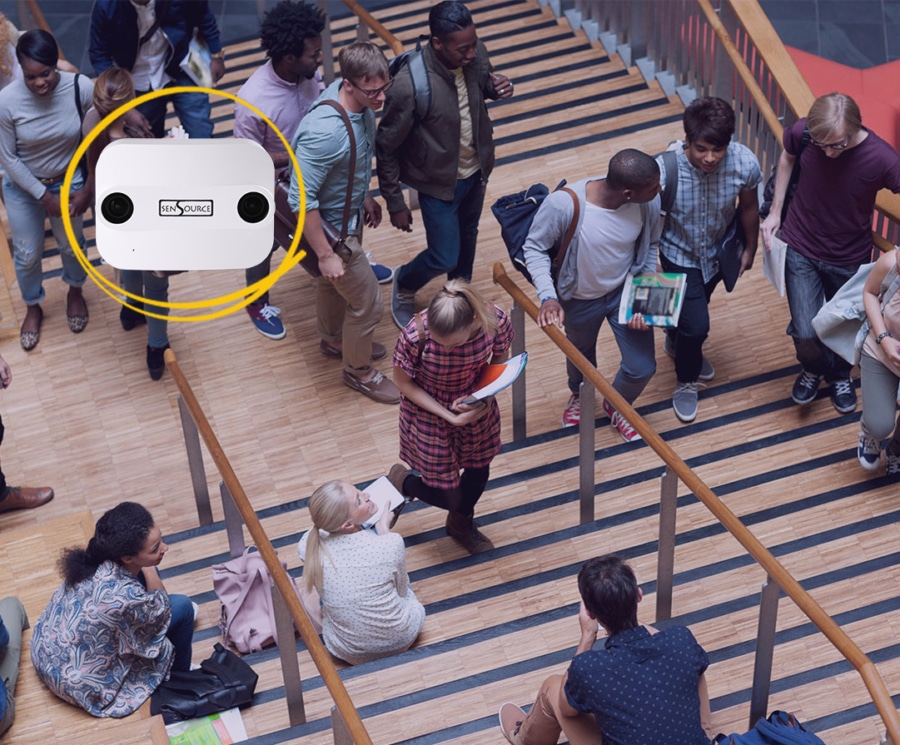
Which industries are most likely to utilize people counting technology?
Historically, libraries and retail were the main industries to use people counting technology. Libraries required patron statistics to submit to the government for funding and retailers wanted to know how many browsers converted into shoppers.
As businesses increasingly rely on accurate data points to succeed, people counting technology has expanded into many other industries.
Much like libraries, other government-owned or grant-funded organizations utilize people counting technology to justify funding requests. For example, university student unions, museums, state visitor centers, and parks.
The amusement industry has innovated the way people counting data can be used. Rather than only using threshold counts at the door, sensors are being used to calculate ride wait times, dwell time of guests at attractions, and more. Amusement parks, family entertainment centers, zoos, and casinos all use people counting technology to improve business operations and improve the guest experience.
How accurate are people counters?
In general, modern people counting systems can achieve high levels of accuracy, around 97% or greater. However, it is important to note that no people counting system is 100% accurate, and occasional errors may occur.
Stereo-Video technology is the most accurate way to count people with consistent ratings of 97% or greater.
It overcomes the inaccuracies of simple technologies like infrared break-beam sensors and Bluetooth/WiFi beacons, like placer.ai, that both struggle with high density foot traffic.
Thermal imaging is still used today and boasts an 85% accuracy rating. It’s ideal for very low light or total darkness scenarios where a video lens can’t function, such as a theater or haunted house.
The combination of AI (artificial intelligence) software and stereo video hardware has bolstered accuracy even further. Layered with machine learning (an application of artificial intelligence), the software that powers the sensors can improve the recognition of humans and thereby do a better job of excluding everything else. Scenarios that occasionally trick a sensor into inaccuracies, such as missing a count for a child in a stroller or adding a count for a mannequin, are resolved with AI as the sensor “learns” and continually improves its algorithm. By 2026, we predict that AI-enabled people counters will collect enough data points to improve the accuracy rating to 99% on average.
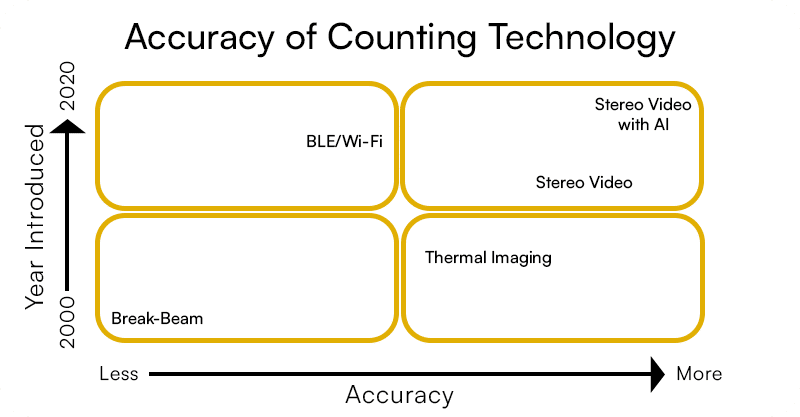
What’s the latest in people counting technology?
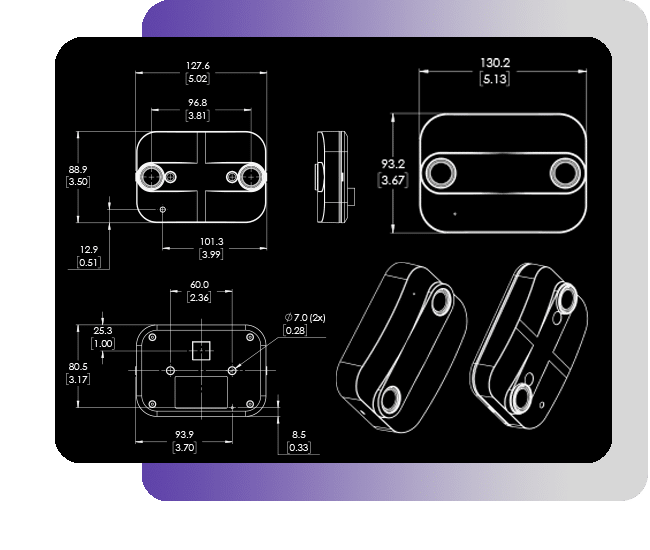
People counting technology is ever-improving. Gone are the days of basic break-beam style sensors. Advancements in computing and hardware components have made stereo-vision, or stereoscopic, people counting the most accurate and accessible solution.
Dual lenses allow the sensor to not only see an area but also gain depth perception. This triangulation is used in advanced algorithms to determine if a human is walking in the sensor’s detection area. It eliminates false counts of bags, carts, boxes, and other non-human things passing through the area.
A PoE (power over ethernet) connection powers the sensor and transmits data to a cloud-based reporting platform. Modern people counting software offers reporting and analysis tools as well as an API to pull data into your existing business systems.
LoRaWAN people counters are the latest technology and are still in the R&D phase. Using the LoRaWAN network, people counting devices can communicate data without needing a hardwired cable or a WiFi signal. The quantity, quality, and scope of data a sensor can communicate and its connection consistency are currently being studied.
A History of People Counting Devices
Photoelectric Break-Beam
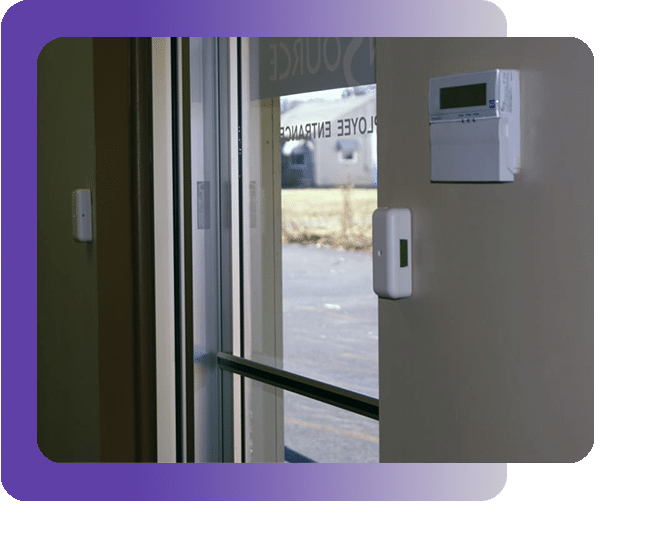
In the early 2000’s break-beam style counters were seen on doorframes across the country. The units used a basic technology to capture a general sense of a facility’s foot traffic. If the invisible infrared beam was broken, it incremented a count. The sensing unit included a small display for staff to read the foot traffic statistics for the day and reset.
Precision was the main problem with this technology. The device would increment a count whenever the beam was broken, and oftentimes the beam was broken by a crowd and the unit only counted one, rather than accounting for the five people who entered side-by-side.
Overcounting was also common if someone paced back and forth between the sensing units, perhaps waiting for a friend or talking on the phone.
Break-beam counters quickly became obsolete when the next generation of technology arrived and improved upon its shortcomings.
Thermal Imaging
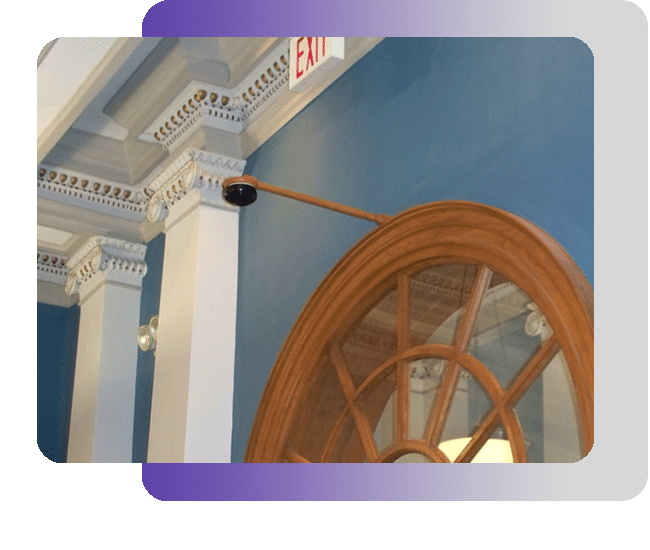
Around 2010, thermal imaging people counting technology took over the market and at the time were the most accurate. It resolved many of the inaccuracies posed by break-beam devices. Mounted on the ceiling, it captured a top-down view of a building’s entrance.
Using thermal imaging, a person’s heat signature was detected, allowing precise counting, including groups walking side-by-side and omitting objects without heat signatures like bags and carts. The devices were also PoE, meaning they connected to your network and push traffic data to software – no manual data collection required.
The problem with thermal imaging technology was inconsistency. Outside sources could affect the sensor’s ability to count, such as changes in temperature from a nearby HVAC system. Because the device is scanning for a heat signature of a human compared to its snapshot of the floor, if a person stood still long enough the sensor would consider that person part of the background and drop its track, losing the count.
After about a decade run, video-based technology outpaced thermal for the best counting solution.
Stereo Video
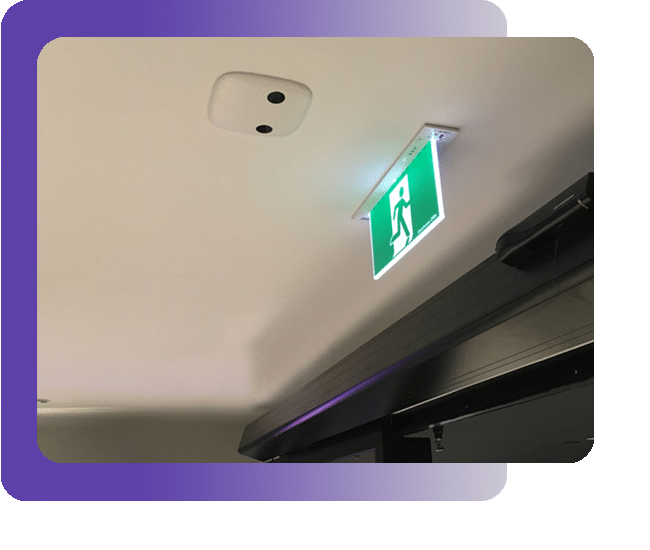
Stereo-video based sensors remain the most accurate people counter technology on the market, consistently boasting 97% or greater accuracy. This high level of accuracy is achieved through dual lenses, a very specific algorithm to detect people, sensor logic added during configuration, and validations to notify falling accuracy.
How much do people counting sensors cost?
The cost of the system depends upon the sensor model type and quantities needed to adequately cover the desired area. The cost includes three main components:
Hardware
The hardware consists of the sensor itself, which is a one-time fee. A site survey is needed to determine the quantity and model required.
Software
The software is an annual SaaS subscription that gives access to your data on the cloud, reporting tools, and technical support.
Installation
Installation is a variable cost based on your network requirements and the feasibility to run the cable and mount the sensor.
How many people counters do I need?
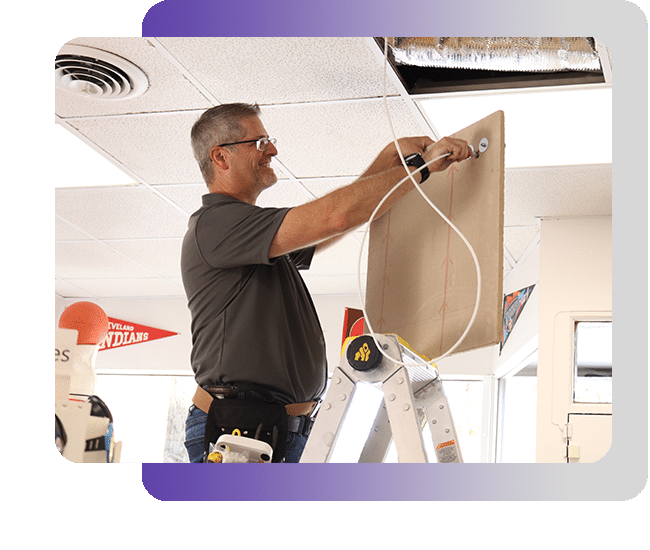
No two applications are exactly the same, so the number of people counting sensors will depend on your specific location and doorways. A field survey should be completed, including measurements and pictures, to help determine how many sensors are needed.
In general, one sensor will cover a standard double doorway. The higher the sensor is mounted, the wider its coverage area. If you have an eight-foot ceiling, you won’t be able to view much more than the width of a doorway. If you have a ten-foot ceiling, you can view about 23 feet wide. An account manager will review your entrance measurements to determine how many sensors are needed.
Multiple sensors can be stitched together to create a wider field of view when necessary.
How is people counting hardware installed?
The installation process depends on the type of technology being used. Here are some general steps to install a people counting system:
Determine the location
The first step is to determine where to install the people counter sensor (or sensors). The ideal location is typically near the entrance or exit of a space where foot traffic is expected.
Install the hardware
Depending on the ceiling type, the hardware may include a sensor, mounting brackets, and ethernet cabling. Follow the manufacturer’s instructions to install the hardware in the chosen location.
Test the system
After installation, the system should be tested to ensure it is accurately counting people. This may involve conducting a trial run with a few people or testing the system over a longer period of time to ensure it is capturing accurate data.
Do people counting cameras pose a privacy concern?
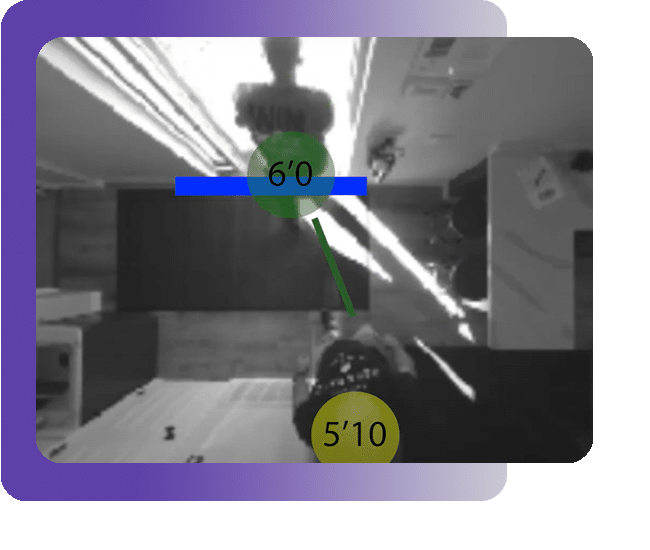
No personally identifiable information is collected, recorded, stored, or transferred using a people counting devices. The sensor is not a security camera, therefore video feed isn’t recorded to a DVR.
Upon installation, the sensor’s low-res video feed is scheduled to record an hour segment to confirm the counting accuracy and sensor placement. No video feed is stored onboard the sensor, so you cannot go back in time and record or view past video footage.
You control the privacy settings of the sensor’s low-res validation video feed to dictate what is best for your guests and applications while maintaining the most accurate data.
What business metrics can be found using people counting data?
The data collected by people counting systems can be used to optimize operations, improve customer experience, and increase revenue. Retailers, museums, entertainment venues, and other businesses can use people counting data to make informed decisions about staffing, marketing promotions, store layout, and visitor flow.
Here are some common use cases for people counting data:
What are the most important features to look for in a people counting solution?
When considering a people counting solution, several important features should be taken into account to ensure success for your specific needs. Here are some key features to look for:
Accuracy
The primary purpose of a people counting solution is to provide accurate data. Look for a system with a high accuracy rate, like a stereo-video sensor, as even small errors can significantly impact decision-making processes based on the data.
Scalability
Consider whether the system can be easily scaled up or down to accommodate changes in the size of the area you want to monitor. A flexible system allows for easy adjustments as your needs evolve.
Reporting
Real-time reporting is crucial for making immediate decisions and reacting promptly to changing situations, such as crowd management in retail stores or event venues.
Privacy and GDPR Compliance
With increasing concerns about privacy, it’s essential to choose a people counting solution that respects individual privacy rights and complies with relevant data protection regulations.
Integration Capabilities
The people counting solution should have the ability to integrate with your existing systems, for example, through an API call or using Power BI, to streamline data analysis and decision-making.
Durability
Depending on the environment in which the solution will be deployed, durability and resistance to harsh conditions, such as dust, humidity, or extreme temperatures, should be considered.
What level of business impact can be expected from a people counting solution?
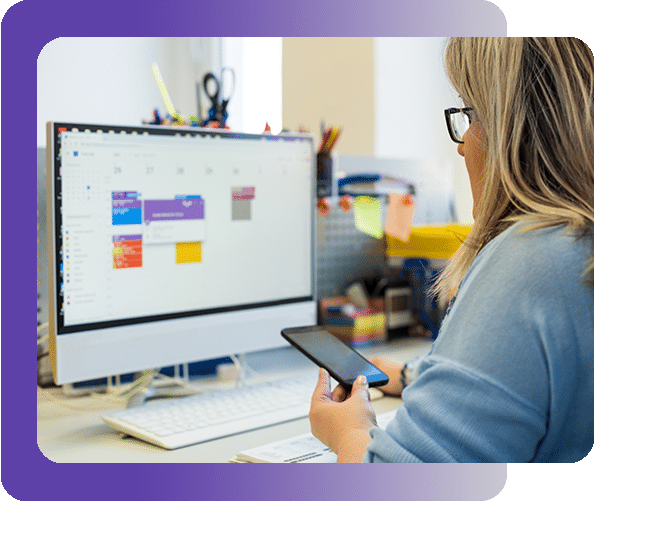
The infusion of people counting data into your existing business’s performance indicators can have an impact on your operations, finances, and your guests’ experience.
You’ll see an immediate impact on operations when you begin basing more decisions on data, rather than hunches. For example, the Hill Student Center at the University of Alabama at Birmingham always staffed two student employees at the help desk throughout the day. Once they installed a people counter, they were able to see the peak and nonpeak times students were using the Center.
Armed with this data, the director realized it didn’t make sense for two people to staff the help desk during slow traffic times. By simply adjusting the staffing schedule to align with traffic flow, the Hill Student Center saved $12,000 in the first year of using a people counting system.
By adjusting the staff schedule, the Center was able to save money while maintaining the level of service the students deserve from the help desk.
Top People Counting Suppliers in the United States
When comparing suppliers, it’s important to look at the full scope of a company – from their business structure to their offerings. The ownership status can give insights on the company’s measure of success; public companies, such as ShopperTrak, and VC-backed companies, such as RetailNext and Dor, are responsible for making financial gains for investors, whereas privately held companies, like SenSource, aren’t influenced by the demands of external financers. How long a company has been in operation should be taken into consideration as well. SenSource was founded in 2002, RetailNext in 2007 (formerly operating as BVI Networks), and Dor in 2015. ShopperTrak was founded around the same time as SenSource, then was purchased by Tyco in 2015 who merged with Johnson Controls in 2016. They are under the Sensormatic Solutions umbrella, but still referred to as ShopperTrak in the industry.
The most accurate technology in the industry today uses stereo-video based sensors and consistently proves 98% accuracy. ShopperTrak, RetailNext, and SenSource use this technology. ShopperTrak and RetailNext source their sensing units internally and SenSource takes a technology-agnostic approach, testing and sourcing from a variety of suppliers. Dor utilizes thermal-imaging technology that averages around 85% accuracy.
All modern people counting suppliers will offer their own software platform for reporting and analysis and most will offer an API to connect your traffic data with your existing business systems.
| SenSource | ShopperTrak | RetailNext | Dor | |
|---|---|---|---|---|
| Measurement of Success | Customer Satisfaction; Financial Gains Reinvested into Company | Financial Gains for Investors | Financial Gains for Investors | Financial Gains for Investors |
| Ownership Status | Private Same owners since founded in 2002 | Public Purchased by Tyco in 2015 Tyco merged with Johnson Controls 2016 | Private with VC Backing 2007-2011 operating as BVI Networks 2012-present operating as RetailNext Same owners since founded in 2007 | Private with VC Backing Same owners since founded in 2015 |
| Target Market | Multiple-Verticals | Retail | Retail | Retail |
| Hardware Technology | Technology Agnostic video-based | Single-Source Orbit / Sensormatic video-based | Single-source Aurora video-based | Single-source Dor thermal imaging |
| Accuracy | 98%+ | 98%+ | 98%+ | 85% |
| Cloud-based Software | Yes Vea Analytics Platform | Yes ShopperTrak Analytics Suite | Yes RetailNext Traffic 2.0 | Yes DOR Foot Traffic Monitor |
| Monthly Software Rate | $$ | $$$ | $$$ | $ |
| API | Yes | Yes | Yes | Yes |





